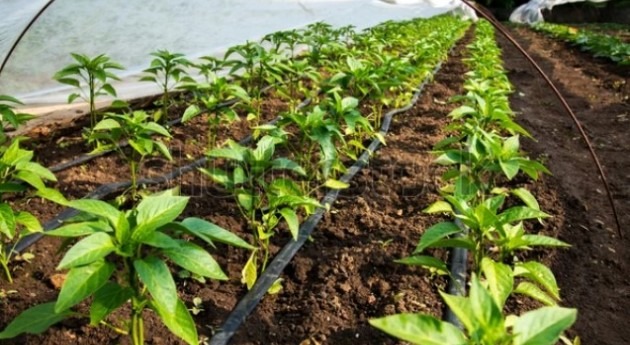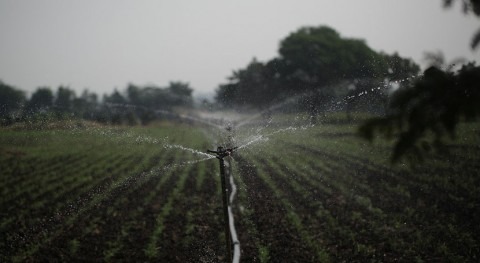Arid and semi-arid countries are characterized by hot summers and wet winters with variation of rainfall during the year, as well as from year to year. Based on the climate change projections of the United Nation Framework Convention on Climate Change (UNFCCC) Report 2020, the predictable climate change is expected to worsen the existing water problems in these countries.
Farming is the major sector where there is high amount of water consumption in many of these hot countries. The type of crop and irrigation method plays an important role, not just in addressing the profitability of the crop at a certain farm or across the agricultural industry, but on the total water consumption in that country. Therefore, farmer’s behavior towards their lands is not just important for their own benefit, but for the benefit of the whole society.
Water technologies especially drip irrigation with its’ various types, can play a major role in reducing water consumption if installed and managed properly. However, decision makers and NGOs always find it difficult to convince farmers to adopt these technologies in their farms. The main reason behind this problem, is the high initial cost of such technologies, the need for regular maintenance, and the farmers belief that this high cost will not realize financial benefits in terms of water and energy savings. Moreover, many of them have the ancient belief that when the ground is fully submerged with water the crop will grow faster and healthier. This is obviously not the case, as no one thinks that filling their cup of coffee beyond the cup limits provides a much better caffeine boost in the morning. Finally, getting accustomed to a new technology takes time, and mistakes happen along the way, which might result in damaging or reducing the crop’s growth. Such loss is always inacceptable for the farmer, and always blamed on the new technology.
At the outset of their global interventions, non-governmental organizations (NGOs) directed their funding towards providing farmers with new irrigation technologies as a free sample project and provided them with the right training to help them use the technologies efficiently. However, farmers did not seem to care about the new technology and sometimes disconnected it and inserted the old one. Moreover, not all farmers trust NGOs and governmental initiatives, thinking that they are collecting data on water usage to increase the tariffs. NGOs on their side have always looked at the problem from a scientific and engineering prospective, and not from a business perspective. Customers are not always obtained, and their behavior is not changed based on telling them that this product is better, nor by giving it to them for free.
Introducing products for free sometimes evokes questions regarding the product quality and incentives of the donor. Therefore, the full value chain is the most important aspect to be considered when introducing any type of innovations, including social impact ones. The NGOs initially excluded the supplier-buyer relationship from the water saving initiative, which meant not using the multichannel relationship between customers (farmers) and the retailers they trust. Therefore, several NGOs changed their strategy to target the supplier of these technologies instead of the farmer.
One noticeable initiative conducted by the USAID, MercyCorps, and the International Water Management Institute (IWMI) in Jordan, was the Water Innovation Technology (WIT) Initiative, that executed this strategy to increase irrigation technologies adoption in the Jordanian agriculture sector. It can be noted that prior WIT, water technologies were already present at the local Jordanian market, but Jordan has weak governmental extension services with respect to incentivizing water innovation adoption, and donors provided direct subsidies to farmers, without considering the private sector weight in technology adoption.
The change of strategy introduced by WIT, to target the suppliers of water technologies maximized interest for all stakeholders across the value chain. As a result, suppliers had more market research from these NGOs and thus created more customers, the NGOs on the other hand were able to introduce the new technologies to the farmers, whom from their side brought the technology from the suppliers they trust. Putting it in business terms the “supplier power” is one of the five market forces that should be addressed when setting a business strategy, and a multichannel relationship between suppliers and buyers is always better than an a singular one in terms of customer acquisition.
The second step in the WIT initiative was to create a collaborative environment via workshops to strengthen the bond between the supplier and the farmers, in the hopes of convincing them to adopt new technologies. Suppliers were further incentivized by offering them money on each new land metered with the new technology.
Finally, the NGOs conducted a monitoring and evaluation scheme to assess how many meter cubes of water the new technologies are saving, using meters they installed on site. An interesting realization was that the farmers started monitoring the new technology using the installed meters without NGO interference; independently, the farmers started to buy more of the new technology for their lands and discard the old ones. Moreover, after understanding the full benefits of the technology, they started addressing its’ problems like maintaining emitters’ clogging, without complaining. The results of water saving at the end of the project were very promising.
Introducing innovations is not only bound by scientific and engineering dimensions, even if it is in the non-profit domain. It is shaped by entrepreneurial thinking, that always fields the question how to change customer behavior to introduce better practices, and how to maximize benefits for all stakeholders. Looking at the value chain and the already established trust relationships can help targeting the right link in the chain where the trust relationships is already present. Moreover, allowing the customer to freely play and test the product will reveal its strengths and weaknesses, while also allowing customers to judge freely whether it is worth adopting from practical experience.






